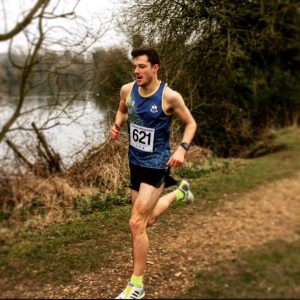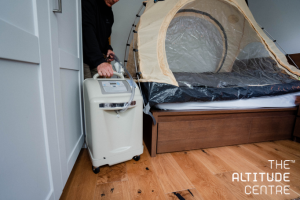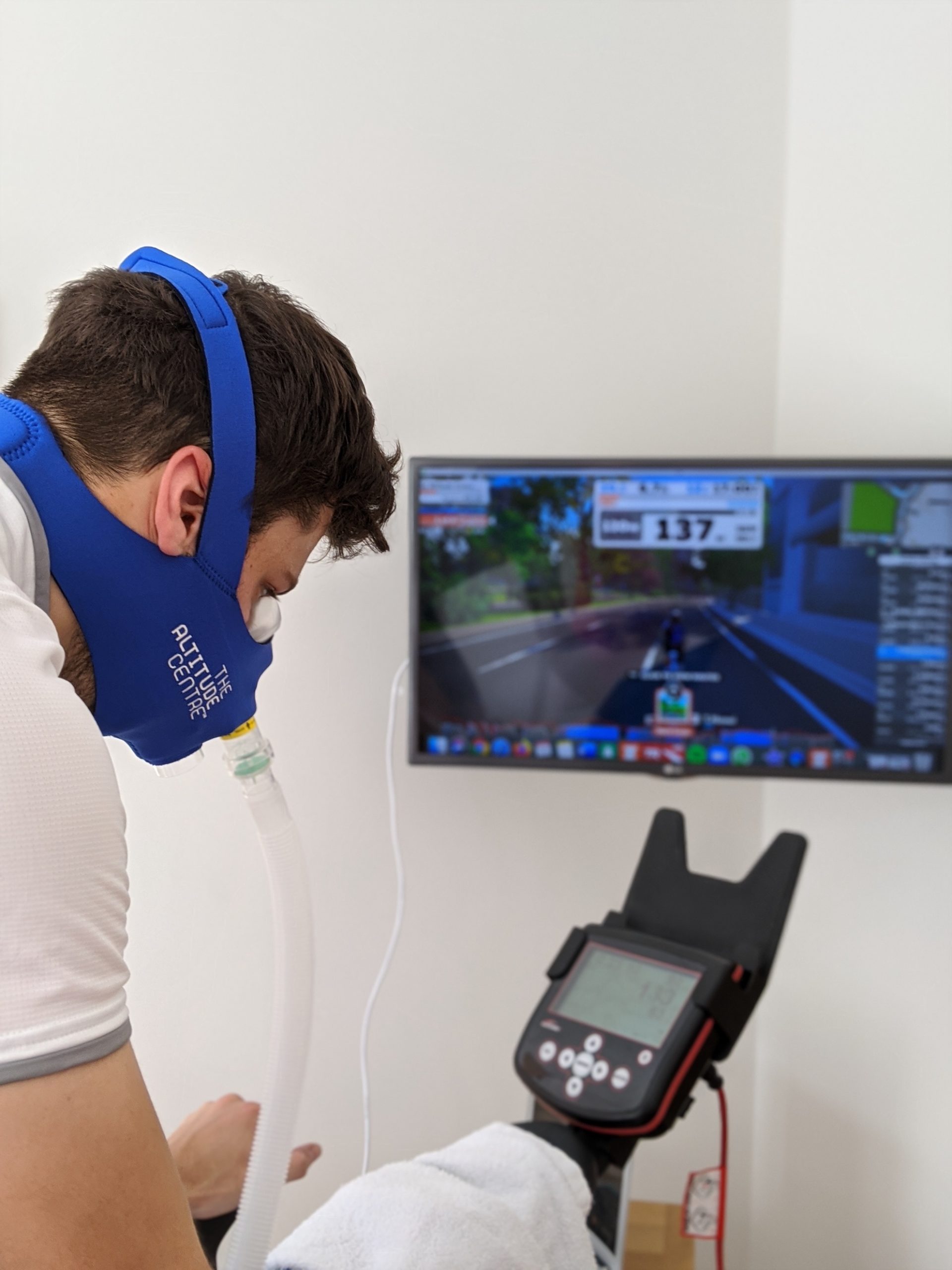Ahead of this week’s webinar on Altitude Training for Injury Rehab, Lead Performance Specialist James reflects on recent personal experience of the role altitude can play in the process…
A few weeks ago, we had an idea that, as The Altitude Centre’s resident runner, I’d undertake a block of sleeping at altitude in preparation for a few target races around the end of November and start of December. Like any good case study, I ran a baseline workout with my training group on the Tuesday (a classic Mona Fartlek), and began sleeping in the tent that night, with the plan to sleep at altitude for the next four weeks before repeating the workout and racing a 5 mile and a 10 km the next two weekends after that.

This type of altitude training is called live high train low. The idea being that you spend lots time ‘living’ at simulated altitude by sleeping in an altitude tent and spending time in there during the day, but you step outside to train at sea level. It overcomes the criticisms that have been levelled at traditional altitude training camps, and for those of us in full time jobs, it’s far easier logistically speaking than upping sticks and moving to the Rift Valley for a month. The real benefit of sleeping at altitude for endurance athletes is that we are exposed to altitude for a significant period of time at night, with top ups during the day. This switches on the erythropoietin (EPO) cycle, which, as you may well be aware, is responsible for producing red blood cells. More red blood cells equals more oxygen carried in the blood, equals improved endurance performance. To be able to get these benefits without having to do any additional training is the real draw of sleeping at altitude- you literally train in your sleep! When you get it right, it is one of the most effective ways of improving endurance performance.

Even the best laid plans don’t always work out. After running the workout on the Tuesday I started to feel a dull pain on the inside of my left shin. Having lost 4 months to shin splints only a few years ago, I was instantly concerned, and quickly cut back my training volume and intensity. A few days later, however, the pain hadn’t subsided, and a check in with the physio confirmed what I feared: early stages of medial tibial stress syndrome (MTSS). I’d caught it early, which was good, but the prospect of no running for up to 4 weeks put paid to the races I had planned, and I was obviously concerned about losing months’ worth of training in a short space of time.
Enter altitude, and fortunately all was not lost. The first step in injury rehab is to heal as quickly as possible. Fortunately, we know that exposure to altitude activates important processes in bone healing which have been shown to improve both the speed with which bone heals and the bone’s strength once it has healed. Not only that but the growth hormone release from altitude exposure would go some way to healing any damage in the muscle. So I went straight into intermittent hypoxic exposure (IHE) every day for an hour, to begin this process. This was accompanied by sleeping at altitude to give a bigger hypoxic dose than could be achieved through IHE alone.

Another major consideration was the potential fitness loss during injury. Four weeks without running is a pretty major interruption for any runner- even during an off season you’d expect to run a little even if there was no real structure to it. For me, this was where sleeping at altitude, accompanied by cross training on the Wattbike at altitude, has been invaluable. I’ve slept every night in the altitude tent, and completed 3 high intensity and 3 low load, low intensity sessions on the bike each week. During every single session (sleep and training) I’ve monitored my blood oxygen saturation to ensure the altitude has been correct for the target of that particular session. By combining sleep and altitude training, and monitoring my responses to each, I have been able to mitigate the de-conditioning effect of being injured. Ok, when I return to running I won’t have quite the same running legs as I would have had, but my general cardiovascular fitness has been well preserved by the cross training, and thanks to sleeping at altitude my physiology will be better compared to where it would have been after 4 weeks without running.
The early signs of this effect are good. My functional threshold power (FTP) has jumped from 3.6 W/kg to 4 W/kg in just 4 weeks, and I’ve been at the sharp end of a few Zwift races in a way I simply haven’t been before. Of course, the test will be when I return to running how quickly I can get into race shape for the winter league which recommences in January. However, I can’t help feeling that I’ll be starting from a far higher baseline than I would have been, had it not been for the addition of altitude to my rehab program.
The Altitude Centre offers rental systems so that you too can train and sleep at altitude whether during injury or to progress your own performance levels. All our rentals benefit from expert advice and bespoke monitoring services to set you on the right path to achieve your goals. For further information please get in touch below.
